The many joys of curation in the digital age
and why it as important as creation for the creative, connected and curious mind.
I think curation is underestimated as an activity on the Internet. I hope to explore some reasons and thoughts around the idea of curation in this essay.
Personally, I think it is as important as creation for the creative, connected and curious mind.
But I think the idea of digital curation just got a major boost. Our favourite social media platform, Instagram just launched a feature that may make curation cool again.
What is the magic curation feature on Instagram?
Instagram’s repost feature allows users to reshare public feed posts and reels to their followers, appearing in a dedicated “Reposts” tab on their profile and in their followers’ feeds.
To use it, tap the repost icon (two arrows in a square) below a post, add an optional comment, and confirm. This feature credits the original creator, expands content reach, and helps users share content they find interesting without needing third-party apps. It is only available on the mobile application right now (September 2025). This is a preview of the feature from my Instagram account.
This is a snap of the last three things I reposted on my Instagram account. It is the coolest feature of this app for me as a user because now people can re-post the things they love while doomscrolling. And your consumption choices on Instagram can say a lot about you as a person. I repost a lot of videos about sports, books, science, films, art, city life and more. I wonder what this says about me?
This Instagram Feature is also a form of Curation because you are bringing together all your favourite instagram posts and reels in the same place.
What is curation and why does it matter in the digital age?
At its essence, curation is the process of selecting, arranging, and displaying materials (such as artifacts, texts, art pieces, information, or digital content) based on some principle of curation, principle of purpose, or storyline. Curation was originally a term used to refer to museum curators, whose responsibilities were to care for the collection and determine what to put on display.
In the digital age, curation has expanded to include digital media, knowledge work, education, marketing, and personal playlists. Digital Curation through social media platforms is also on the rise. You have several social media platforms that offer
Youtube through video playlists
Spotify, Apple Podcast, Amazon Music through music playlists
Twitter through lists
Linkedin through interests
Substack through recommendations and notes
Goodreads through book recommendation lists and book reviews
Letterboxd through film recommendation lists and films reviews
Pinterest through photo boards
Reddit and Quora Answers
Instagram through reposts and stories
What is the etymology of the word, ‘curation’?
*This etymology section of the essay was written with the help of A.I.
The word comes from Latin → Old French/Medieval Latin → English. Let’s break it down:
Step 1: Latin Roots
cūra (noun) = care, concern, attention, solicitude, administration
From this comes cūrāre (verb) = to take care of, attend to, treat, heal.
Related Latin derivatives:
cūrātor = one who cares for, guardian, overseer, manager.
cūrātiō = care, administration, treatment, management.
So the essential sense is caregiving, stewardship, responsibility.
Step 2: Transition to Medieval Latin
In Medieval Latin, curatio and curator were used for: guardianship (a curator managing the affairs of a minor), healing/treatment (a physician’s care) or management of objects or institutions.
Step 3: Old French and Middle English
Via Old French: curacion (c. 1300s) = healing, care.
In Middle English (14th century): “Curation” meant healing, medical treatment (close to cura = cure). Over time, its use narrowed to refer to spiritual and institutional care, especially in the Church (the “curate” as one entrusted with souls).
Step 4: Modern English Usage
By the 17th–18th centuries: “curator” and “curation” shifted strongly to the museum/library sense: managing collections and arranging them for public display.
By the 20th century: the cultural sense broadened (art exhibitions, galleries).
By the 21st century: digital and metaphorical use took off — “content curation,” “curated playlists,” “curated experiences.”
Summary of Etymological Layers
Latin cūra → care, attention, concern.
Latin cūrātiō → care, treatment, administration.
Old French curacion → healing, management.
Middle English curation → healing, spiritual care.
Modern English curation → museum care → broader selection/organization of content.
In the modern context the word, ‘curation’ got popular in museums and art galleries to bring together the work of artists around certain themes or ideas. But I believe it has relevance in the world of digital media and social media as well. We are all curators on the Internet because we are always sharing, organizing and recommending things. Here is a short concise definition of curation in a modern context.
Curation is the act of choosing and organizing content, objects, or ideas with care and intention. It involves adding context or perspective so that the selection tells a story or serves a purpose. The goal of curation is to make information or experiences more meaningful, accessible, and engaging for others.
As creative professionals, it is important to understand that before you start creating something you engage with it for a really long time as a consumer and curator. This applies to music, books, films, art, science, social media posts and more. But let us get back to our discussion on the etymological roots of the word curation.
I love how the etymological roots of the word curation goes back to the idea of caring, paying attention to something and looking after someone.
In the digital world you are caring for someone when you share a video playlist, music playlist book review, film review or a reflective personal post. You are also caring for someone when you share certain social media posts about things you experience in the real world in your personal and professional life in a thoughtful and reflective way. When you recommend something to someone you are engaging in a complex psychological conversation with the heart and mind of the other person. You are thinking about what you consumed and sharing it with someone based on what you know about their preferences and world views.
Isn’t that a form of caring, paying attention to something and looking after someone?
How to think about digital curation and make it fun again?
I do not think there is a perfect way to do this. But here are some ways I engage in digital curation. I created a one page website and a blog to bring together all my work on the Internet. While doing this I realized that more than 60% of my work on the Internet is curation. You can find my website and my virtual diary/blog at these links.
I love curating lists of my favourite books on Goodreads because it helps me think about books I read and books I want to read. I am also able to find themes and topics I normally enjoy reading.
I love curating lists of my favourite movies on Letterboxd because I love talking about the films I love and finding other films around the same theme.
I love curating playlists of my favourite videos through playlists on Youtube because I think Youtube is a gold mine for videos about every topic under the sun.
I love curating playlists of my favourite music through playlists on Spotify/Amazon Music because I realized that I love organizing songs around moods and days and emotions. It also helps me find new music by the same artist.
I love curating my favourite articles and essays on Substack because it helps spread the word about great writing but also helps me reflect on the pieces that rewired my thinking.
I love creating lists of my favourite accounts on X/Twitter because even with all the noise there are some accounts that do spread joy and work hard to share useful and important information.
Why is curation as important as creation for the creative, connected and curious mind?
This is a hard one to answer but here are some examples of creative people that spend a considerable amount of time curating material in their fields and talking about it in a passionate and engaged way. The three videos listed below are an example of physical curation in physical spaces.
Here are a few other videos of people that spend a considerable amount of time sharing and curating thoughts on the media and creative artifacts they consume, collect and engage with throughout the year. This is a random assortment from a variety of different fields. But all the people in these videos talk about other people’s work and not their own work. And thus I think this is a form of digital curation as well.
Here is my definition of digital curation that I hope can become a helpful guiding framework for your curation journey
Digital Curation refers to the practice of thoughtfully selecting, organizing, and sharing some form of digital content (social media posts, book reviews, articles, etc.) into a meaningful experience that the user can take part in. Digital curation is not simply collecting digital content but also providing contextualization or perspective that enriches its relevance and usefulness. The intention is to create a flow of information that informs, inspires and connects individuals.
I truly think curation may be one of the best features of the Internet. Share a link to your Goodreads account, Behance portfolio or Instagram account. I would love to follow and learn from you on this journey.
What is your definition of curation? How do you engage in digital curation on the Internet? Who are your favourite digital curators on the Internet?
Until your next curation attempt on the Internet,
Keep Learning
Abhishek


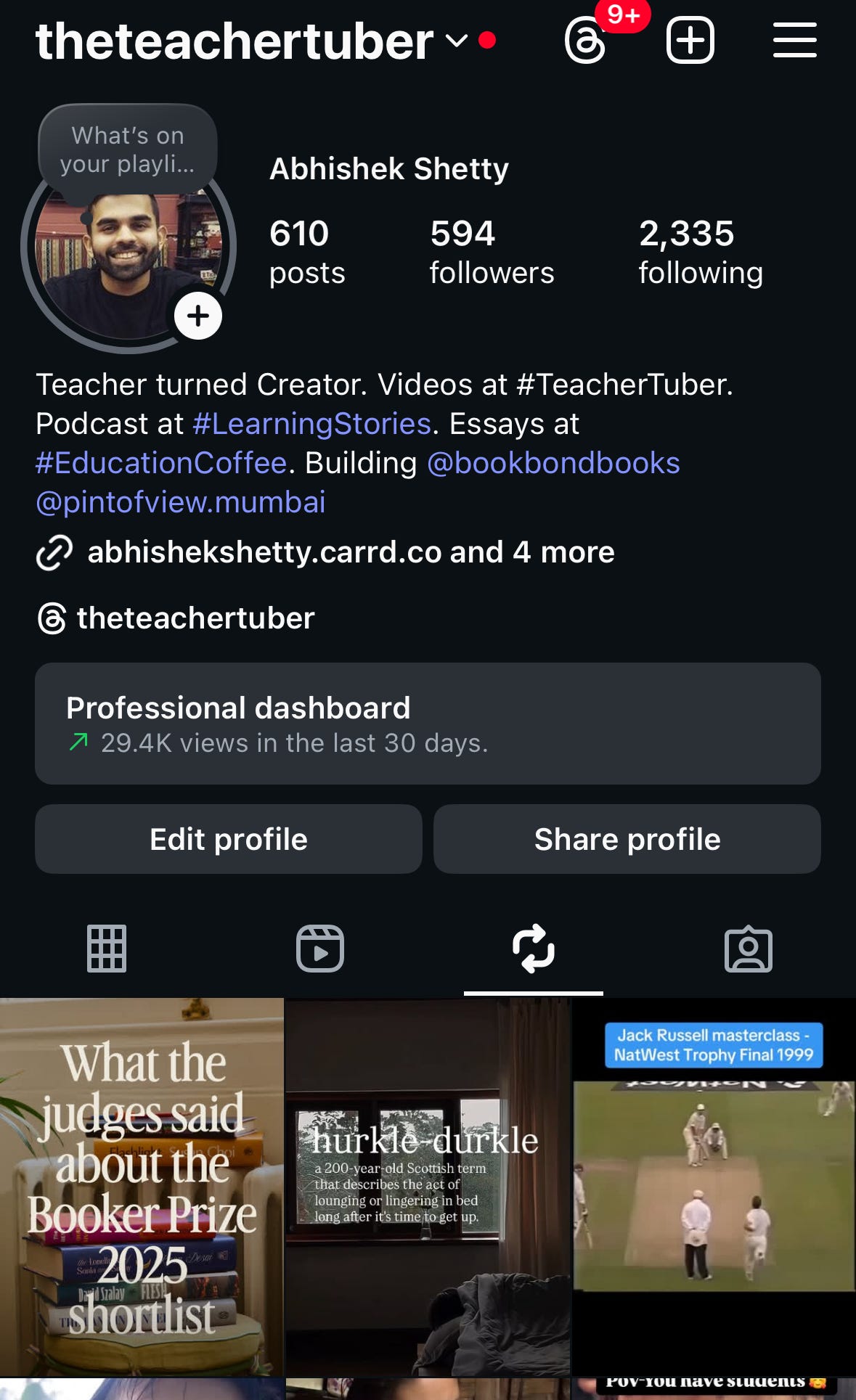
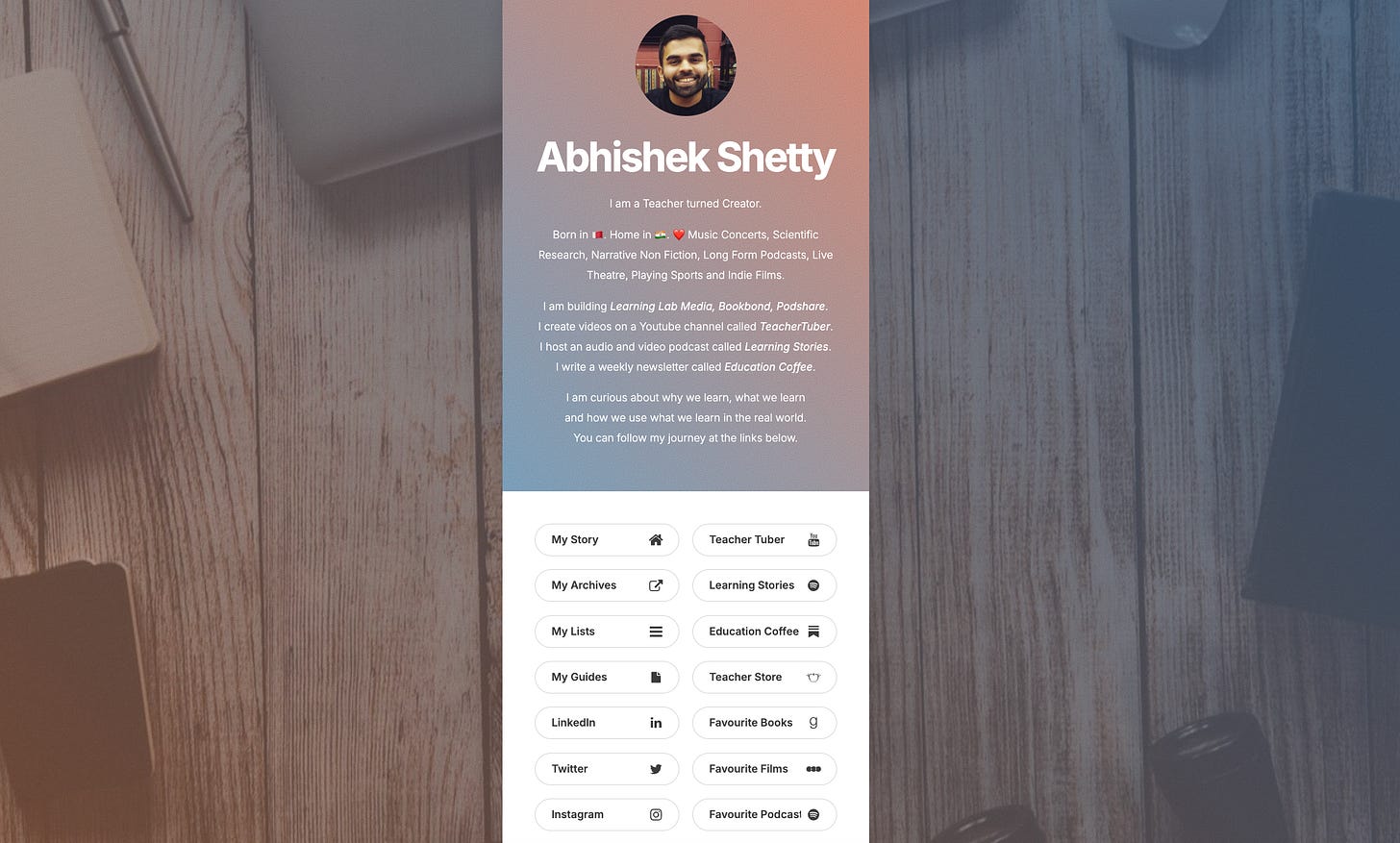
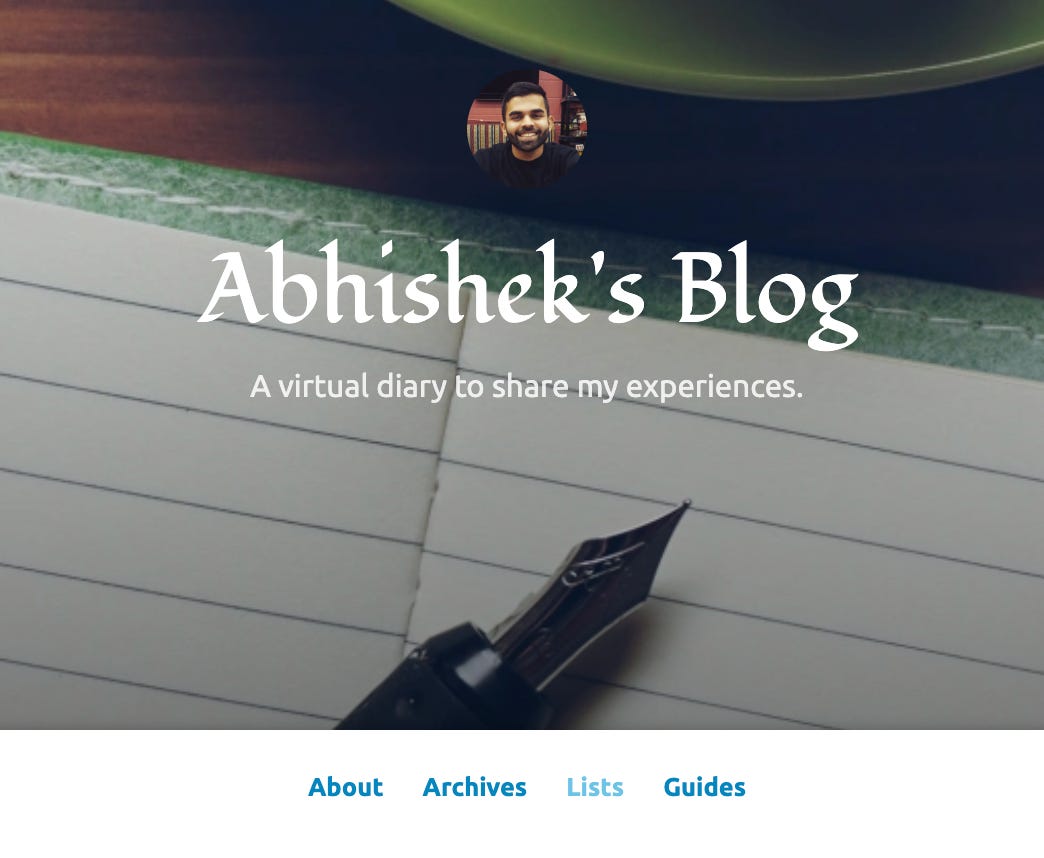
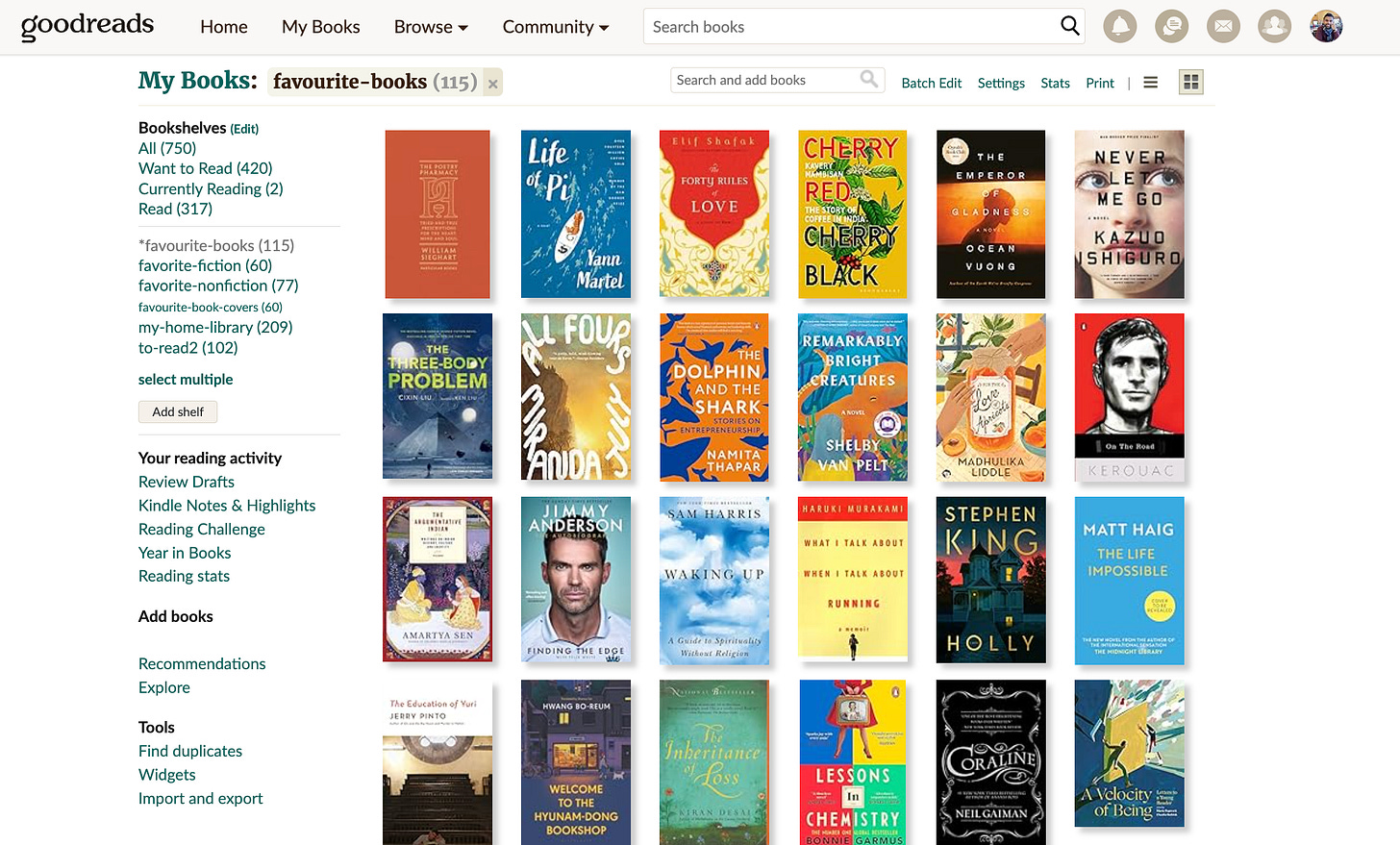
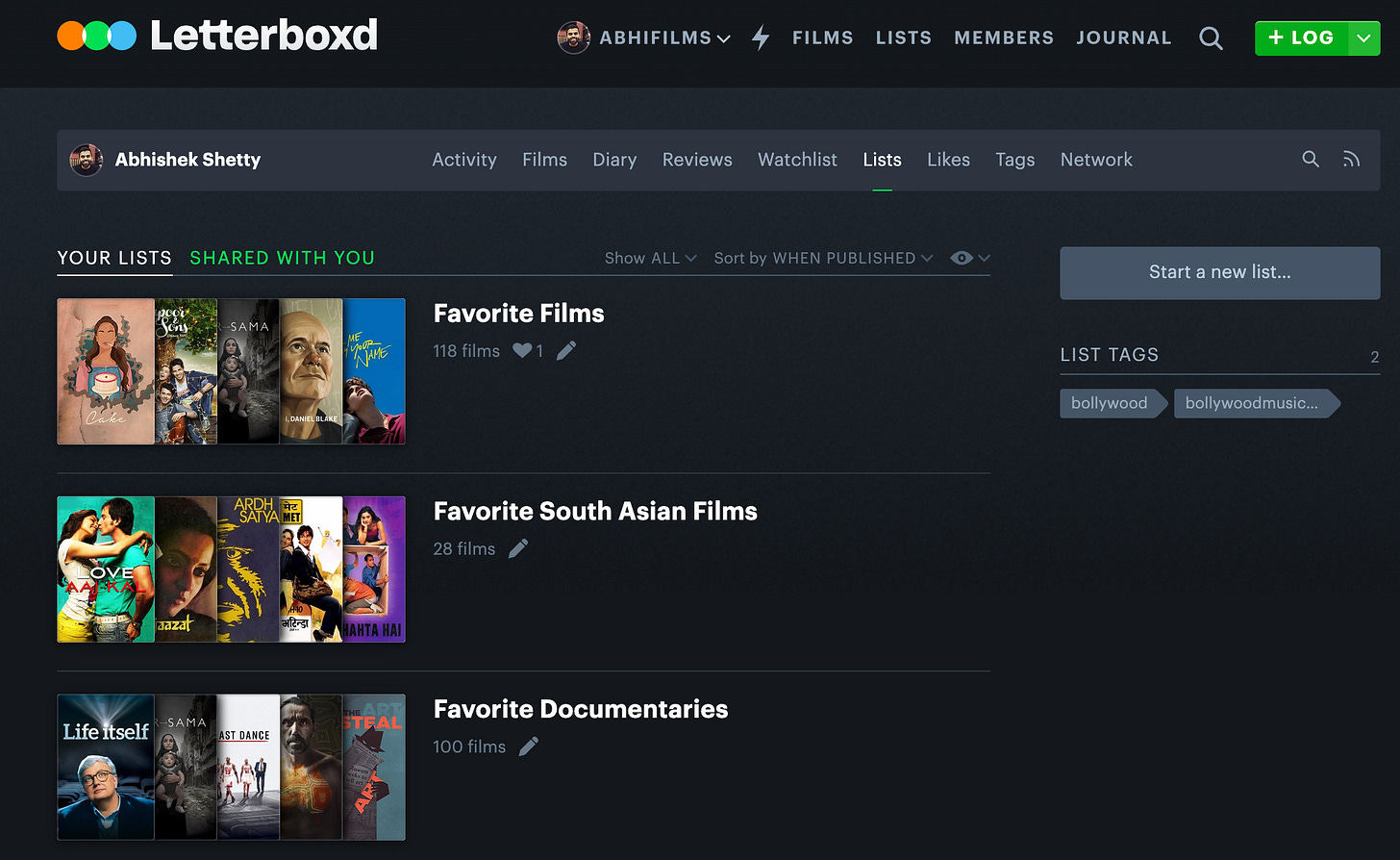



Thanks, Abhishek!!! I really enjoyed reading this piece. It took me back to the early 2000s when the internet wasn't as common. Back then, we’d swap music collections with friends, who were basically our curators.
Curating then was like a true hobby because it required effort, and that effort made us proud.
I remember having my own collection of songs —asking friends if they had a specific track, getting it from them, and then transferring it to my PC. Organizing everything into folders felt like such a fun project!
Nowadays, I just don’t find the same charm in doing it on Spotify. It’s all so easy and accessible now. No one really asks for recommendations anymore, and it takes away that sense of passion that comes from putting in some effort.